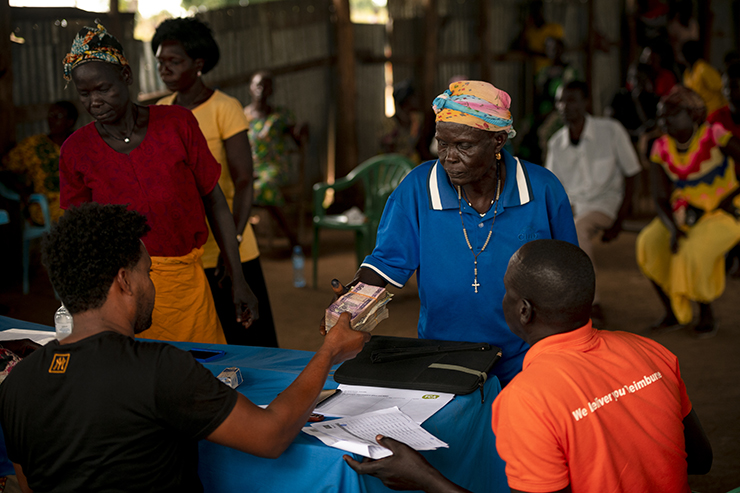Canadian Foodgrains Bank provides food assistance to hundreds of thousands of people in over 20 countries around the world. Food assistance responds to acute hunger, and it can take the form of direct transfers of staple foods and nutritional supplements, or cash or vouchers for people to buy their own food.
At the end of 2019, before the COVID-19 pandemic, 135 million people were facing severe levels of food insecurity requiring humanitarian food assistance. The pandemic is making that situation worse.
The first major impact of the pandemic is on the delivery of emergency food assistance. The widespread global restrictions of movement including flight bans, dusk to dawn curfews, closed borders and partial to complete lockdowns, have affected the transportation of emergency food supplies and the mobility of humanitarian workers. Though food is an essential service and should have unimpeded movement in most contexts, delays are inevitable and the workforce vulnerable to COVID-19. In some cases, it is possible to switch from in-kind food, to cash or vouchers. This reduces risks to humanitarian workers but means that beneficiaries must now go to local markets, which brings its own risk.
A second related implication of COVID-19 is that more people need food assistance because of a sudden loss of income. This is most clearly seen in the case of daily wage workers whose job sites have shut down and workers in the informal sector whose livelihoods has been disrupted. Both now find themselves with no income to buy food. Another example is the children who normally receive meals through school feeding programs. The closing of school disrupted these programs.
The third negative implication is the increased cost of delivering food assistance. Food assistance distributions must follow physical distancing regulations as well as movement restrictions and must have protective equipment and handwashing stations on site. Most food assistance distributions are proceeding with modifications, such as splitting up distributions, fewer people on site, delivering directly to households, reducing the frequency of distributions.
In the longer term, the COVID-19 pandemic will impact the availability of food and purchasing power. The duration of the pandemic and the severity of measures to contain it will determine the level of risk to food insecurity. The availability of food depends on how COVID-19 measures affect food production and distribution.
Food production could be impacted if farmers cannot get the necessary crop inputs or cannot keep their livestock healthy. Food distribution could be disrupted by shortage of labour or transport, closing of processing plants, or by cross-border restrictions on food movement.
The negative economic impacts of the pandemic are already evident, and it is likely that global economies will decline even further towards recession which will likely reduce the funding available for food assistance. The 2019 State of Food Security and Nutrition highlighted the role of economic downturns in prolonging and worsening the severity of food crises. This is particularly the case for countries that rely heavily on primary commodity exports/and or imports and for countries with limited social protection mechanisms. The number of 135 million facing crisis-level food insecurity is likely to increase significantly because of the pandemic. WFP estimates that by the end of 2020, 265 million people could face acute hunger and need emergency food assistance.




